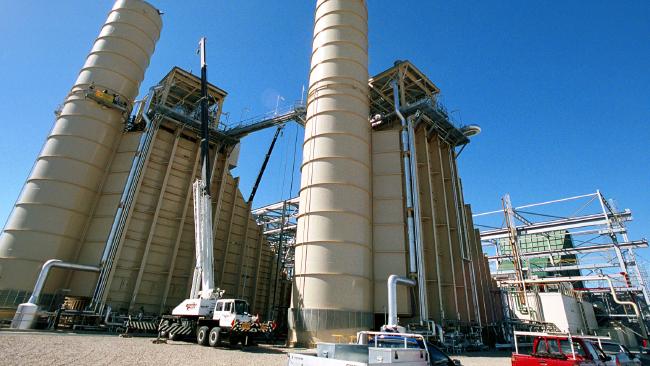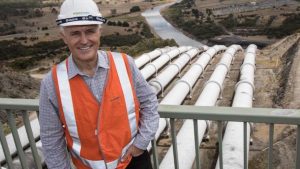The South Australian government has managed to convince the owners of one of the state’s mothballed gas fired generators to switch part of the unit back on – at least temporarily – to help the state through a mini energy crisis.
The state government turned to Engie, the owner of the Pelican Point gas fired power station, under pressure from local industry concerned about soaring electricity prices, which have been caused by a surge in gas prices and reduced capacity on the cable to Victoria because of planned upgrades.

Pelican Point is one of the country’s newest and most efficient gas fired generators, but has been mothballed because its owners – the partially French government owned Engie, which also runs Australia’s dirtiest generator, the Hazelwood coal fired power station – say there is no value in it being switched on.
Engie blames the price of gas and the “lack of opportunity” in the market. However, it has also applied for a government contract under the state’s tender for “low carbon” energy supply – a tender many hope will go to new technologies such as solar tower and storage. (See Gas or solar towers? Will South Australia government blink in push to clean energy).
While Pelican Point has been offline, the market in South Australia has been filled by less efficient and more polluting gas fired power units such as Torrens Island (see table above), which – unlike Pelican Point – has reversed plans to mothball some of its units following the closure of the Northern coal fired power station.
Spokesmen for both the South Australian government and Engie said there was no financial assistance provided to Engie to temporarily switch on Pelican Point, but they would not discuss what other “arrangements” may have been agreed.
It is suggested that Engie were just “happy to help out” despite what Engie has described as the poor economic in the current market. It was suggested there was no link to the low carbon energy tender.
In a statement, energy minister Tom Koutsantonis, admitted the government’s intervention in the market was an “extraordinary step”, but was unavoidable due to the planned outage of the Heywood Interconnector to Victoria, coupled with higher than expected gas prices, as well as severe weather conditions.
This had contributed to large-scale price volatility in the energy spot market in recent days, and Engie had agreed to provide 239MW of additional supply to help system security, and calm the market.
Once the works on the inter-connector are complete, expected by July 25, then a higher import capacity will be available. The government expects this to have a “positive effect” on wholesale electricity prices.
Koutsantonis says the events are yet another example of the failure of the “so called” national energy market.
“A confluence of remarkable events has led to incredible volatility in the spot market over recent days which has resulted in higher electricity prices and put pressure on South Australian businesses, some of whom have raised their concerns with me,” he said in a statement.
The South Australia government been lobbying for another link to the main grid on the eastern states, and recently put aside $500,000 to help fund a feasibility study.

An Engie spokesperson said in a statement that Pelican Point was likely to be switched off again once the current interconnector outage is resolved. (Engie does not have a significant retail base in South Australia to use as a hedge as other generators might do).
“While it makes sense for the higher efficiency gas turbine plant to be returned to service, replacing the operation of lower efficiency peaking plant in its portfolio, once the inter-connector outage is complete, current market conditions, tight gas supply and high gas prices will mean Pelican Point is likely to be again off-line in the near term,” the company said in a statement.
There are fears in renewable energy circles that South Australia may use its clean energy tender as a pretext to provide a contract or subsidy to have Pelican Point back in the market permanently. This is despite the fact that it is rated as one of the cheapest gas fired units to run.
Engie is competing with another of other proposals, including for a 110MW solar tower and storage power station to replace the retired coal generator in Port Augusta.
Studies by the Melbourne Energy Institute have suggested that dispatchable solar power will be a better option for South Australia, particularly given the volatility and soaring cost of gas. South Australia is more exposed than other states because it is at the “end of the line”, and has fewer competing power stations.
These graphs, from MEI’s Mike Sandiford, illustrates what has been happening to the cost of gas fired generation as gas prices go through the roof. Prices, for the same capacity, have risen as much as four-fold.
The first graph is from June, 2014, when gas prices were still relatively low. The average price was $54/MWh, and even when demand for gas fired generator was heavy, reaching towards 1,500MW, the price barely reached above $100/MWh.

That is not the case now. With the price of gas hitting record highs in June, the average price is now more than $120/MWh, and when demand reaches towards 1,500MW, the average price soars to $400/MWh, with peaks way above that.
If gas prices were to remain that higher, it would seem fruitful to encourage new technology such as solar towers and storage which carries no fuel price risk, and can still supply on demand.








